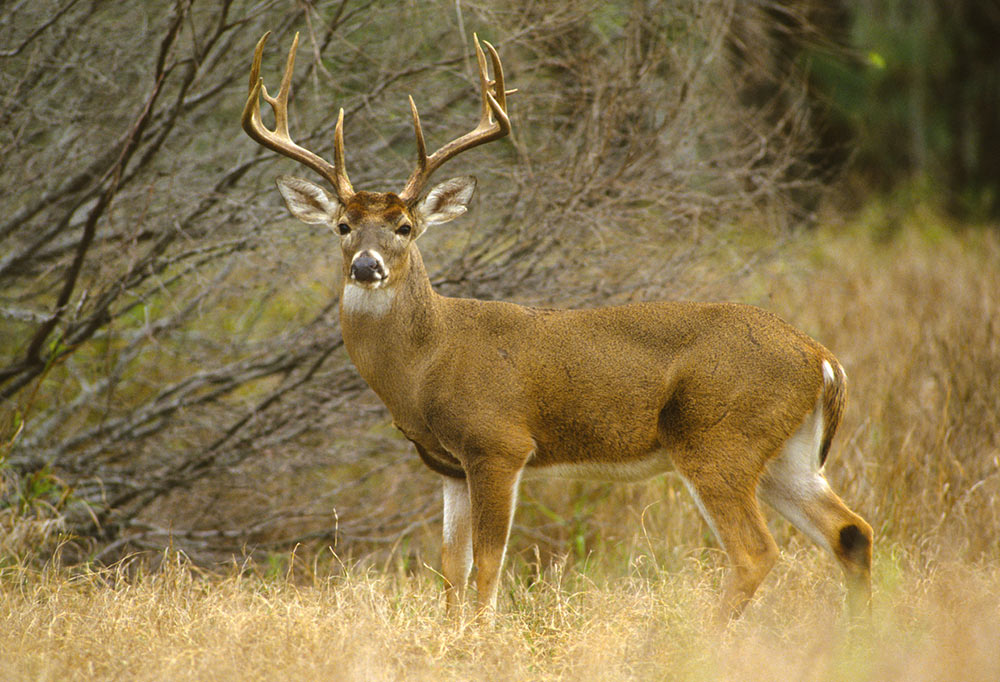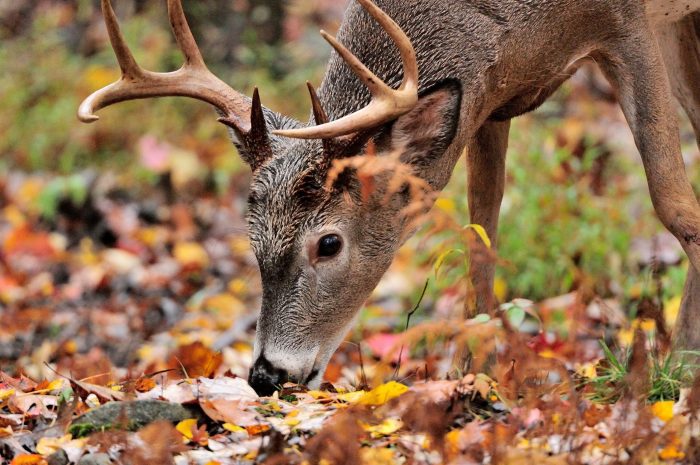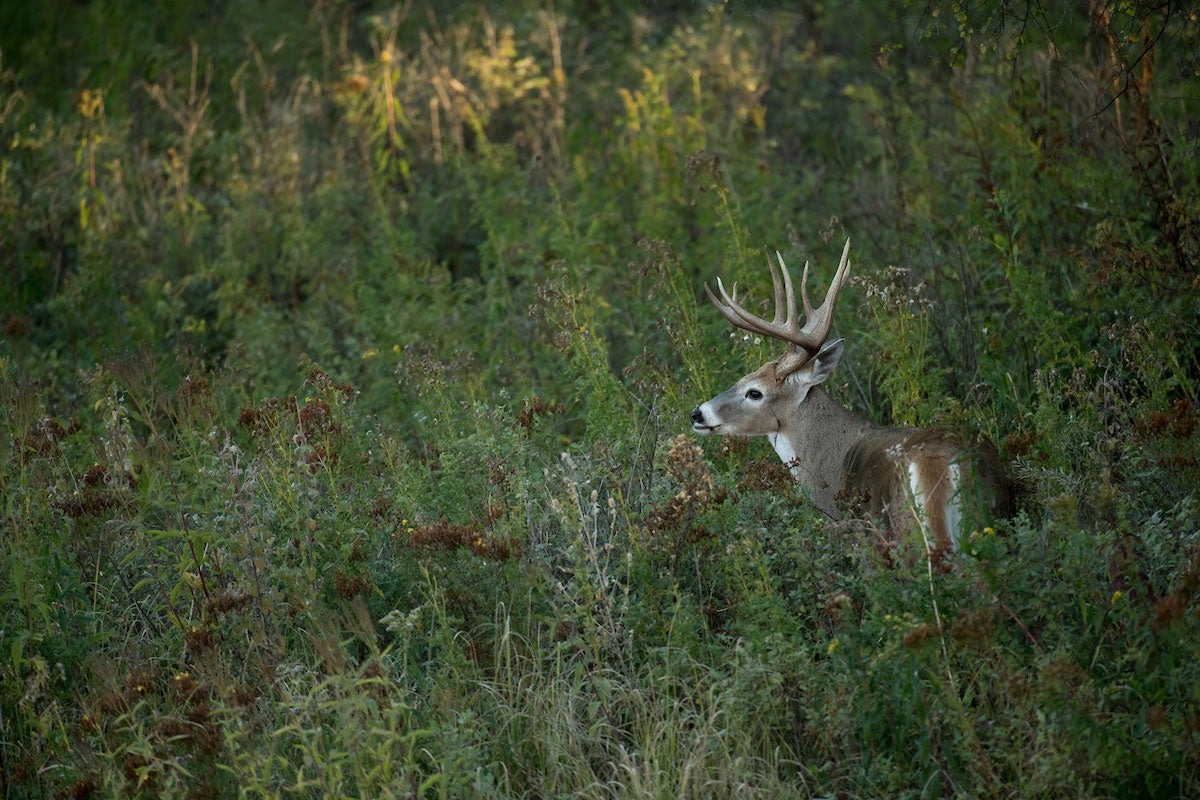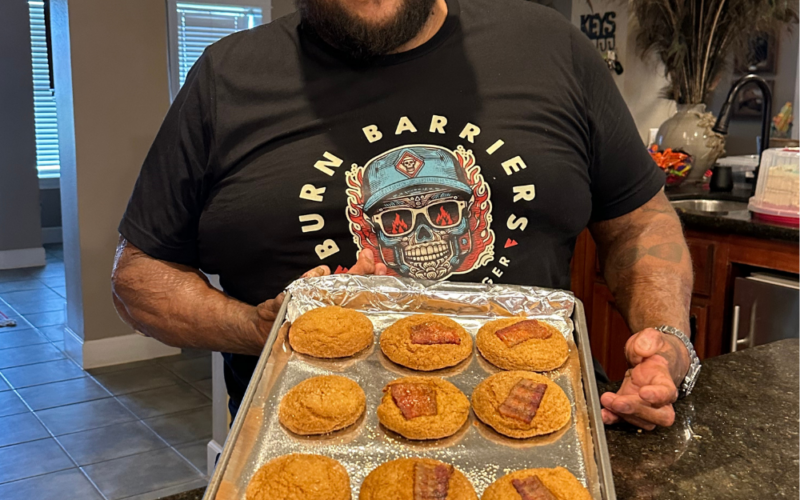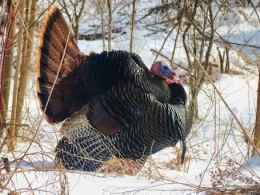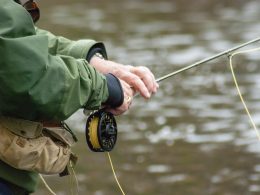During the rut bucks will leave their safe zones in search of does. They’re now in areas they’re not familiar with and are now moving more than usual. This means that this is the time of year that monster buck might finally make a mistake and find himself within bow range.
The downside is this. During this time bucks are no longer predictable. All that time you spent looking for rubs or scrapes essentially means nothing right now. This is even more frustrating if you’re hunting one particular deer.
It’s easy to fall into the trap of seeing a large scrape and thinking it’s your buck. Maybe he did make it, maybe he didn’t. That buck that was here all summer and early fall could now be miles away and this is the scrape from a much younger and smaller deer. This time of the year they no longer care about freshening a scrape or a rub so trying to pattern them is a waste of time.
Table of Contents
Buck Tendencies
To boil down this time of the year as simply as possible all you need to realize is that bucks are out looking for does. Find the does find the bucks. If there’s no reason for does to be out moving then there’s no reason for a buck. You just need to use a little common sense this time of the year and you’ll find your luck changing.
Before hanging your stand think to yourself “Would a buck looking for does come through here?” if the answer is no, then don’t hunt that spot. This way of thinking will eliminate a large portion of hunting spots and will narrow down the location where you should be hunting.
Look for spots that are near doe bedding areas and feeding areas. The bedding spots will do best in the morning and feeding areas will do best in the evening.
Next, you’ll need to think like a buck. What’s the best way I can get to these while keeping a low profile while also finding the path of least resistance.
Pre Rut
During this time bucks and does are focused on finding food. They’re attempting to fatten up for winter so they can make it through the cold weather as healthy as possible.
You’ll start to notice more active feeding in the mornings and evenings. Also, bucks will begin to rub and scrape more often. Targeting scrapes and rubs is a great tactic to begin with. These areas attract other deer so you could have multiple shots at different bucks through the day. Check around food sources for these.
Since deer are focused on feeding during this time, you should put your primary focus on trails leading to and from feeding areas. If you know bucks are in the area then there’s a good chance at least one will walk down that trail.
Peak Rut
Now we’re going to focus on the most exciting and hectic time known as the peak rut. It’s hard to pinpoint a date but you’ll know it when you start seeing bucks chase does around. This part of the season will end when all of the does in the area have been bred.
So, when you start to see bucks chasing does that means it’s time to start shifting gears and begin looking for does. Find the does find the bucks.
Morning
Use the morning during the rut to hunt the edges of bedding areas. Bucks will be active for hours during the morning around doe bedding areas. If possible hang a couple of stands on the edges of these spots. That way you’ll have plenty of stands to choose from that will allow you to hunt with the wind at your face and hopefully near a trail.
Be careful when hunting these edges. If the does become wise to your presence they’ll find a new spot and when the does leave the bucks will follow. Be careful of your scent and be quiet getting into your stand in the morning. Ensure you don’t slam your car door shut, or clang any objects when you get your stand. In the preseason you can lubricate parts of your stand to ensure they dont squeak or make any loud noises.
If there’s a bedding area that just won’t work for a stand then you can look for a spot between two bedding areas. It can be more difficult to find, but you dont need to be as weary about scent or sound. This spot will also get tons of buck traffic.
Evening
Look for feeding areas used by does. Eventually does will begin to get tired of being harassed by bucks so they will stop using these areas. However, you normally have a week or two of good hunting before this happens.
If you can, set up close to the edge in cover near trails that the does have made. Small feeding areas are usually better than large ones, especially if bow hunting. Sitting over large farm fields might be fun. After all, you get to see bucks chasing doe all over the place. However, they could be a quarter mile away which does you and your bow little to no good.
Small clover patches around an acre or so are good places to sit. Everything is close by and the whole field should be open for a shot.
All Day
I know we just focused on morning and evening hunts, but that shouldn’t deter you from sitting all day. This is the time of year when a buck could be taken at one in the afternoon. Bucks could be out fighting other bucks, chasing does, bumped by a farmer harvesting their crops, or even other hunters.
Pack some lunch, water, and even a book if you find yourself getting bored of just sitting. A seat cushion with a back is great and can really help you extend your hunt. You want to be as comfortable as possible so that you can not only sit still but sit as long as possible.
Make some Noise
Bucks know what the sound of antlers clanging together means. So, bring your own antlers and let the bucks in the area know that there’s someone new in town and looking to assert their dominance. Start by rattling softly. Bucks will come into either the slightest or largest of noises, so it is best to start slow and work your way up. If nothing is moving in then you can start getting more aggressive and really slam those antlers together. Mix in some grunts and wheezes and you’ve got yourself a full-blown challenge to all other bucks in the area.
Mornings are the best time for this. The first few hours after daybreak will be the most productive time of the day.
You can also try using grunts or bleats throughout the day to get the attention of nearby bucks. A quick grunt call used sparingly can entice another deer nearby to come check out what’s going on. A long and more drawn-out grunt imitates a deer trying to pick a fight.
Dress Appropriately
If you’re going to be sitting all day then you need to wear the right attire. Cold mornings will require heavier jackets, but by mid-day, you could be sitting in comfortable temperatures. Wearing multiple layers will allow you to sit for longer periods.
A solid base layer is always nice and then on top of that, you can wear some long-sleeved camo pants or shirts. On top of that can be your big heavy jacket that you can bust out when you reach your stand.
If you have a long walk to the stand you may not want to wear your jacket until your sitting down. Chances are you’ll break out in a sweat during the walk which will increase your scent.
Scent Control
If you’re going to bowhunt then you need to worry about scent control. The downside is that there is no way to completely get rid of your human odor, however, you can control it. Showering before your hunt in scent-free wash and using scent-free deodorant is a must. Before walking to the stand you should spray down your clothes and gear with special scent-reducing products. Then give yourself another quick spray once you’ve reached your stand.
It may seem like overkill but it can make the difference between tagging a buck or going home empty-handed.
Post Rut
After the peak rut is over deer will go back to foraging heavily for food. Bucks have been known to lose up to 20% of their body mass during the peak rut so they need to fatten up quickly before the winter comes.
Bucks will still chase does if they have not been bred yet, but your focus shouldn’t be on this. Stick to hunting mornings, evenings, and around food. This is where you’ll have the most luck finding deer.
The pre-rut and post-rut are very similar when it comes to hunting tactics. Stick to looking for food and locating trails running to and from those areas.
Final Thoughts
The peak of the rut is the most exciting time of the year to hunt whitetail. Big bucks can make mistakes and you can reap the rewards if you’ve put in the time and effort to do so. Just remember, find the does find the bucks.

